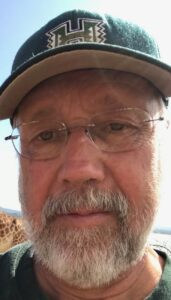
Posted By: Sarah Ratzel, PhD, Science Editor, AJHG
Each month, the editors of The American Journal of Human Genetics (AJHG) interview an author of a recently published paper. This month, we check in with Terry Hassold to discuss his paper, “Failure to recombine is a common feature of human oogenesis”.
AJHG: What caused you to start working on this project?
Terry: Our laboratory has had a long-standing interest (like 40 years long-standing) in human chromosome abnormalities. Numerical abnormalities occur in at least 10% of all pregnancies and are the leading cause of miscarriages and of congenital birth defects (such as Down syndrome). Among the many questions regarding chromosome abnormalities two are obvious – why are chromosome abnormalities so common in humans (but not other species)? And why is it that the vast majority result from errors in the development of eggs—but not sperm? This study was intended to address the second question, asking whether errors occurring at the very beginning of egg development might be responsible for a proportion of chromosome abnormalities.
AJHG: What about this paper excites you the most?
Terry: Meiosis – the specialized cell division that generates eggs and sperm – begins very early in mammalian females. Specifically, in humans entry into meiosis begins in the fetal ovary, when homologous chromosomes pair with one another and exchange genetic material; i.e., they “crossover”. Crossovers are essential because they lock chromosomes together until the egg enters the first meiotic division, an event that occurs when the egg ovulates many years later. There are many ways in which you might imagine that crossovers become less effective over time; e.g., possibly with increasing maternal age they fail to interact properly with other proteins that tether sister chromatids, weakening the links between the homologous chromosomes.
However, our study demonstrates that right from the beginning of oogenesis, close to 10% of all eggs have chromosomes that did not crossover. This makes them vulnerable to mis-divide, increasing the risk that mature eggs will have too many or too few chromosomes. Thus, it appears that right from the get-go, a striking proportion of human oocytes are pre-destined to be chromosomally abnormal. Put another way, it appears that these errors are hard-wired into our species, even though the selective benefit of such mistakes remains unclear.
AJHG: Thinking about the bigger picture, what implications do you see from this work for the larger human genetics community?
Terry: As much as anything else, we think of this as a public service announcement. That is, we have known for a long time that advancing maternal age increases the likelihood of chromosomally abnormal eggs but our observation demonstrates that many chromosome errors have nothing to do with maternal age. They are, instead, errors that are extremely common in human eggs – for reasons that are unclear.
Nevertheless, we think that this information has considerable practical clinical importance. From our experience counseling couples who have experienced a miscarriage or the birth of a child with an extra or missing chromosome, it is clear that there is frequently accompanying guilt — i.e., I did something, or I didn’t do something, and this is the result. Our results indicate that quite the contrary, many of these chromosome errors are simply hard-wired into human biology.
AJHG: What advice do you have for trainees/young scientists?
Terry: I’m not sure I have any truly sage words to pass on, but two aspects of my own experience may be useful. First, find your passion. When I was in grad school, I conducted a spectacularly mediocre thesis project on the genetics of human fingerprints (this was a hot topic in human genetics for about a nanosecond). As part of this project, I karyotyped a sub-set of individuals with unusual fingerprint patterns — and while the results were interesting, for me the main impact was that I fell in love with chromosomes. I decided then that I wanted to spend my career understanding chromosome biology, and why the incidence of chromosome abnormalities was so high in humans…and that’s what I’ve been lucky enough to do. While I don’t expect everyone will have my kind of “aha” moment, I’ve seen a number of junior faculty who have altered their research programs to align with what they thought was fundable. From my point of view, that’s unlikely to succeed – it’s hard enough to develop a productive program without being passionate about what you’re doing. So my advice is — find your passion and follow it! No one can guarantee success, but you’ll maximize your chances by doing what you love. Second, learn to communicate. I had a very wise post-doctoral mentor who beat it into my head that you might be God’s gift to science, but if you couldn’t make my research understandable to others, you might as well not have done the experiments. Over time, that advice has only become more prescient. Whether you’re trying to give a good talk at a national meeting, interacting with colleagues on a multi-institutional research project (like the one that led to our recent AJHG paper), communicating the importance of your findings to parent support groups or other lay audiences, or trying to convince a grant review panel to give you a good score, you will simply be dead in the water if you don’t know how to clearly present your science. It’s simple – learn to communicate or be left behind.
AJHG: And for fun, tell us something about your life outside of the lab.
Terry: We live much of the year outside Bend, OR, on the east side of the Cascades, so lots of opportunity for biking, hiking and golf.
Terry Hassold, Ph.D., is a Professor in the School of Molecular Biosciences at Washington State University.
